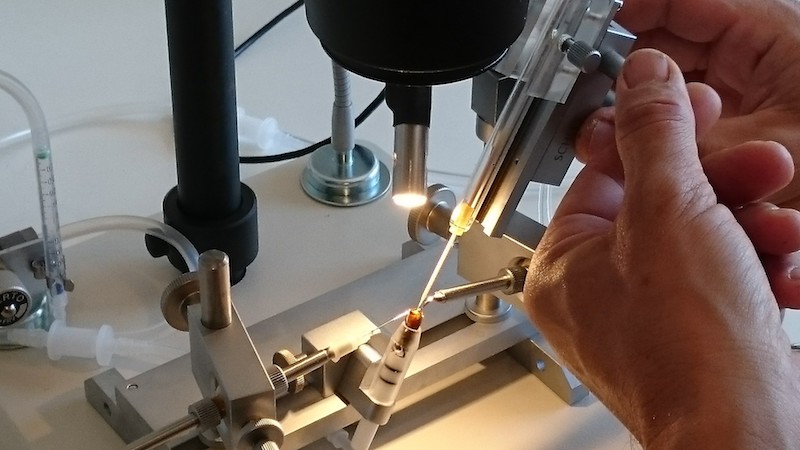In 1770, F. Huber tried to inseminate queen bees by collecting drones’ sperm using a small painting brush. Since his first attempts, over two centuries ago, beekeepers have now master the artificial insemination technique, as it is the only way to ensure constant and absolute control over mating. Beekeepers use artificial insemination mainly for genetic selection purposes, such as difficult crossbreeding.
A delicate technique
Artificial insemination’s technique was developed by three genetic researchers: J. Fresnaye (France), L.H Laidlaw (USA) and F. Ruttner (Belgium) in the 1970s and 1980s.
It is a highly delicate technique, that may require a few days, thus a few wasted queens, to master. To evaluate your progress you can look at the queen’s spermatheca, by ripping the queen’s abdomen in 2, the results will be self- explanatory: if it is full of sperm you can call it a success, if it is empty you should practice again !
What you will need
To practice and perfect your artificial insemination technique you should select a space that is easy to clean and sanitized, because the risk of infection during surgery is highly deadly for queens. Also, the room should have about 60% of humidity, to avoid the drying-out of the queen’s organs during the surgery.
You will need the following equipment:
— a microscope, with a ten time magnifying-lens for collecting sperm and a twenty time magnifying-lens for insemination
— an artificial insemination kit: made of 2 brackets, 1 glass needle and a CO2 gaz bottle
— a bee cage, to keep the drones
How to
— First step: collecting drones’ sperm: you will need 10 days old to 20 days old drones. You have to press the drones’ abdomen between your fingers to induce an erection and then you can collect the drones’ sperm with the glass needle. It will require between 15 to 20 drones to collect 0,27oz to 0,33oz of sperm to inseminate only one queen bee. This practice requires a lot of patience!
You can collect a large quantity of sperm and store it, away from sunlight and at around 55°F, for a few weeks.
— Second step: the insemination : is performed on 10 days old queens. You first have to numb them by putting their head in the CO2 tube for a few seconds. Once asleep, you can start the surgery by using the two brackets to open the queen vaginal area and insert the glass needle filled with the drones’ sperms. To finish, you can put a colored spot on their back, to help you find them faster in the hive and keep track of their age, and some beekeepers also choose to cut their wings, to prevent swarming.

